Ansible的循环:loop,with_<lookup>和until
环境
- 管理节点:Ubuntu 22.04
- 控制节点:CentOS 8
- Ansible:2.15.6
循环的方法
loopwith_<lookup>until
用这几种方式都可以实现循环。其中, loop 是推荐的用法,在很多时候能够替换 with_<lookup> 。
loop 和 with_<lookup>
with_<lookup> 使用了lookup插件,比如 with_items 使用的是 items lookup。(注:可参见我另一篇文档。)
loop 等同于 with_list 。注意, loop 是作用在list上的,如果用在字符串上会报错。
---
- hosts: alltasks:- name: task1debug:msg: "{{ item }}"loop: "{{ ['aaa', 'bbb', 'ccc'] }}"- name: task2debug:msg: "{{ item }}"with_list: "{{ ['aaa', 'bbb', 'ccc'] }}"- name: task3debug:msg: "{{ item }}"with_items: "{{ ['aaa', 'bbb', 'ccc'] }}"
运行结果如下:
TASK [task1] ***************************************************************************************
ok: [192.168.1.55] => (item=aaa) => {"msg": "aaa"
}
ok: [192.168.1.55] => (item=bbb) => {"msg": "bbb"
}
ok: [192.168.1.55] => (item=ccc) => {"msg": "ccc"
}TASK [task2] ***************************************************************************************
ok: [192.168.1.55] => (item=aaa) => {"msg": "aaa"
}
ok: [192.168.1.55] => (item=bbb) => {"msg": "bbb"
}
ok: [192.168.1.55] => (item=ccc) => {"msg": "ccc"
}TASK [task3] ***************************************************************************************
ok: [192.168.1.55] => (item=aaa) => {"msg": "aaa"
}
ok: [192.168.1.55] => (item=bbb) => {"msg": "bbb"
}
ok: [192.168.1.55] => (item=ccc) => {"msg": "ccc"
}
可见,本例中 loop , with_list , with_items 的效果是一样的。
但是对于嵌套的list, loop 和 with_items 并不是完全等同的。
......- name: task4debug:msg: "{{ item }}"loop: "{{ ['aaa', ['bbb', ['ddd', 'eee']], 'ccc'] }}"- name: task5debug:msg: "{{ item }}"with_items: "{{ ['aaa', ['bbb', ['ddd', 'eee']], 'ccc'] }}"
......
运行结果如下:
TASK [task4] ***************************************************************************************
ok: [192.168.1.55] => (item=aaa) => {"msg": "aaa"
}
ok: [192.168.1.55] => (item=['bbb', ['ddd', 'eee']]) => {"msg": ["bbb",["ddd","eee"]]
}
ok: [192.168.1.55] => (item=ccc) => {"msg": "ccc"
}TASK [task5] ***************************************************************************************
ok: [192.168.1.55] => (item=aaa) => {"msg": "aaa"
}
ok: [192.168.1.55] => (item=bbb) => {"msg": "bbb"
}
ok: [192.168.1.55] => (item=['ddd', 'eee']) => {"msg": ["ddd","eee"]
}
ok: [192.168.1.55] => (item=ccc) => {"msg": "ccc"
}
可见:
loop只针对最外层的list,不管是否有嵌套。with_items则是解开了第一层嵌套的list。这个行为比较诡异,要么就不要管嵌套,要么就全部处理,为什么只处理第一层嵌套呢?
实际上,对于 loop ,可用 flatten filter来指定解开嵌套:
(注:flatten是扁平化的意思,这里的扁平化和Java8里扁平化流的概念类似,即把层次结构转换为线性结构)
......- name: task6debug:msg: "{{ item }}"loop: "{{ ['aaa', ['bbb', ['ddd', 'eee']], 'ccc'] | flatten }}"- name: task7debug:msg: "{{ item }}"loop: "{{ ['aaa', ['bbb', ['ddd', 'eee']], 'ccc'] | flatten(levels=1) }}"
......
运行结果如下:
TASK [task6] ***************************************************************************************
ok: [192.168.1.55] => (item=aaa) => {"msg": "aaa"
}
ok: [192.168.1.55] => (item=bbb) => {"msg": "bbb"
}
ok: [192.168.1.55] => (item=ddd) => {"msg": "ddd"
}
ok: [192.168.1.55] => (item=eee) => {"msg": "eee"
}
ok: [192.168.1.55] => (item=ccc) => {"msg": "ccc"
}TASK [task7] ***************************************************************************************
ok: [192.168.1.55] => (item=aaa) => {"msg": "aaa"
}
ok: [192.168.1.55] => (item=bbb) => {"msg": "bbb"
}
ok: [192.168.1.55] => (item=['ddd', 'eee']) => {"msg": ["ddd","eee"]
}
ok: [192.168.1.55] => (item=ccc) => {"msg": "ccc"
}
可见, flatten 默认会处理所有嵌套,也可以通过 levels 选项,指定处理几层嵌套。
由于 with_items 处理一层嵌套,所以, with_items 就相当于 loop 指定了 flatten(levels=1) 。在本例中,task5和task7的运行结果是一样的。
需要使用 lookup 的循环,多使用 with_<lookup> 语句,而不是 loop 语句。比如:
---
- hosts: alltasks:- name: task1debug:msg: "{{ item }}"loop: "{{ lookup('fileglob', '/tmp/*.txt', wantlist=True) }}"- name: task2debug:msg: "{{ item }}"with_fileglob: "/tmp/*.txt"
运行结果如下:
TASK [task1] ***************************************************************************************
ok: [192.168.1.55] => (item=/tmp/b.txt) => {"msg": "/tmp/b.txt"
}
ok: [192.168.1.55] => (item=/tmp/a.txt) => {"msg": "/tmp/a.txt"
}TASK [task2] ***************************************************************************************
ok: [192.168.1.55] => (item=/tmp/b.txt) => {"msg": "/tmp/b.txt"
}
ok: [192.168.1.55] => (item=/tmp/a.txt) => {"msg": "/tmp/a.txt"
}
显然,此处使用 with_fileglob 比使用 loop 要简洁。
注: fileglob 获取指定目录下符合条件的文件名(不包含子目录)。
循环的种类
简单list
---
- hosts: allvars:var1: ['aaa', 'bbb', 'ccc']tasks:- name: task1 # list常量debug:msg: "{{ item }}"loop: "{{ ['aaa', 'bbb', 'ccc'] }}"# loop: ['aaa', 'bbb', 'ccc'] 可以简写- name: task2 # list常量debug:msg: "{{ item }}"loop:- aaa # 引号可以省略- "bbb"- "ccc"- name: task3 # list变量debug:msg: "{{ item }}"loop: "{{ var1 }}"
运行结果如下:
TASK [task1] ***************************************************************************************
ok: [192.168.1.55] => (item=aaa) => {"msg": "aaa"
}
ok: [192.168.1.55] => (item=bbb) => {"msg": "bbb"
}
ok: [192.168.1.55] => (item=ccc) => {"msg": "ccc"
}TASK [task2] ***************************************************************************************
ok: [192.168.1.55] => (item=aaa) => {"msg": "aaa"
}
ok: [192.168.1.55] => (item=bbb) => {"msg": "bbb"
}
ok: [192.168.1.55] => (item=ccc) => {"msg": "ccc"
}TASK [task3] ***************************************************************************************
ok: [192.168.1.55] => (item=aaa) => {"msg": "aaa"
}
ok: [192.168.1.55] => (item=bbb) => {"msg": "bbb"
}
ok: [192.168.1.55] => (item=ccc) => {"msg": "ccc"
}
复杂list
---
- hosts: allvars:var1: [{name: "Tom", age: 20}, {name: "Jerry", age: 18}]tasks:- name: task1debug:msg: "Name: {{ item.name }}. Age: {{ item.age }}"loop: "{{ [{ 'name': 'Tom', 'age': 20 }, { 'name': 'Jerry', 'age': 18 }] }}"#loop: "{{ [{ name: 'Tom', age: 20 }, { name: 'Jerry', age: 18 }] }}" # 报错!说name未定义#loop: [{ name: 'Tom', age: 20 }, { name: 'Jerry', age: 18 }] # OK#loop: [{ 'name': 'Tom', 'age': 20 }, { 'name': 'Jerry', 'age': 18 }] # OK- name: task2debug:msg: "Name: {{ item.name }}. Age: {{ item.age }}"loop:- { name: "Tom", age: 20 }- { name: "Jerry", age: 18 }- name: task3debug:msg: "Name: {{ item.name }}. Age: {{ item.age }}"loop: "{{ var1 }}"
可以看到,对于key要不要加引号,行为好像有点诡异,最好还是加上吧。
运行结果如下:
TASK [task1] ***************************************************************************************
ok: [192.168.1.55] => (item={'name': 'Tom', 'age': 20}) => {"msg": "Name: Tom. Age: 20"
}
ok: [192.168.1.55] => (item={'name': 'Jerry', 'age': 18}) => {"msg": "Name: Jerry. Age: 18"
}TASK [task2] ***************************************************************************************
ok: [192.168.1.55] => (item={'name': 'Tom', 'age': 20}) => {"msg": "Name: Tom. Age: 20"
}
ok: [192.168.1.55] => (item={'name': 'Jerry', 'age': 18}) => {"msg": "Name: Jerry. Age: 18"
}TASK [task3] ***************************************************************************************
ok: [192.168.1.55] => (item={'name': 'Tom', 'age': 20}) => {"msg": "Name: Tom. Age: 20"
}
ok: [192.168.1.55] => (item={'name': 'Jerry', 'age': 18}) => {"msg": "Name: Jerry. Age: 18"
}
dict
如果要遍历一个dict,则需要使用 dict2items filter,将其转换为list:
---
- hosts: allvars:var1: {name: "Tom", age: 20}tasks:- name: task1debug:msg: "Key: {{ item.key }}. Value: {{ item.value }}"loop: "{{ {'name': 'Tom', 'age': 20} | dict2items }}"- name: task2debug:msg: "Key: {{ item.key }}. Value: {{ item.value }}"loop: "{{ var1 | dict2items }}"
运行结果如下:
TASK [task1] ***************************************************************************************
ok: [192.168.1.55] => (item={'key': 'name', 'value': 'Tom'}) => {"msg": "Key: name. Value: Tom"
}
ok: [192.168.1.55] => (item={'key': 'age', 'value': 20}) => {"msg": "Key: age. Value: 20"
}TASK [task2] ***************************************************************************************
ok: [192.168.1.55] => (item={'key': 'name', 'value': 'Tom'}) => {"msg": "Key: name. Value: Tom"
}
ok: [192.168.1.55] => (item={'key': 'age', 'value': 20}) => {"msg": "Key: age. Value: 20"
}
本例中,dict为:
{name: "Tom", age: 20}
转为list后:
[{"key": "name","value": "Tom"},{"key": "age","value": 20}]
循环结果的register变量
---
- hosts: alltasks:- name: task1shell: "echo {{ item }}"loop: "{{ ['aaa', 'bbb'] }}"register: var1- name: task2debug:msg: "{{ var1 }}"
运行结果如下:
TASK [task1] ***************************************************************************************
changed: [192.168.1.55] => (item=aaa)
changed: [192.168.1.55] => (item=bbb)TASK [task2] ***************************************************************************************
ok: [192.168.1.55] => {"msg": {"changed": true,"msg": "All items completed","results": [{"ansible_loop_var": "item","changed": true,"cmd": "echo aaa","delta": "0:00:00.002332","end": "2023-11-21 22:29:54.990234","failed": false,"invocation": {"module_args": {"_raw_params": "echo aaa","_uses_shell": true,"argv": null,"chdir": null,"creates": null,"executable": null,"removes": null,"stdin": null,"stdin_add_newline": true,"strip_empty_ends": true}},"item": "aaa","msg": "","rc": 0,"start": "2023-11-21 22:29:54.987902","stderr": "","stderr_lines": [],"stdout": "aaa","stdout_lines": ["aaa"]},{"ansible_loop_var": "item","changed": true,"cmd": "echo bbb","delta": "0:00:00.002036","end": "2023-11-21 22:29:55.223227","failed": false,"invocation": {"module_args": {"_raw_params": "echo bbb","_uses_shell": true,"argv": null,"chdir": null,"creates": null,"executable": null,"removes": null,"stdin": null,"stdin_add_newline": true,"strip_empty_ends": true}},"item": "bbb","msg": "","rc": 0,"start": "2023-11-21 22:29:55.221191","stderr": "","stderr_lines": [],"stdout": "bbb","stdout_lines": ["bbb"]}],"skipped": false}
}
可见,register变量把循环操作的结果放到了叫做 results 的list里。因此,后续可以遍历 results ,做相应处理,比如:
---
- hosts: alltasks:- name: task1shell: "cat {{ item }}"loop: "{{ ['/tmp/a.txt', '/tmp/d.txt'] }}"register: var1ignore_errors: true- name: task2debug:msg: "{{ var1 }}"- name: task3fail:msg: "Something is wrong!"when: item.rc != 0loop: "{{ var1.results }}"
假设 /tmp/d.txt 不存在,则运行结果如下:
TASK [task1] ***************************************************************************************
changed: [192.168.1.55] => (item=/tmp/a.txt)
failed: [192.168.1.55] (item=/tmp/d.txt) => {"ansible_loop_var": "item", "changed": true, "cmd": "cat /tmp/d.txt", "delta": "0:00:00.002438", "end": "2023-11-21 22:46:28.216904", "item": "/tmp/d.txt", "msg": "non-zero return code", "rc": 1, "start": "2023-11-21 22:46:28.214466", "stderr": "cat: /tmp/d.txt: No such file or directory", "stderr_lines": ["cat: /tmp/d.txt: No such file or directory"], "stdout": "", "stdout_lines": []}
...ignoringTASK [task2] ***************************************************************************************
ok: [192.168.1.55] => {"msg": {"changed": true,"failed": true,"msg": "One or more items failed","results": [{"ansible_loop_var": "item","changed": true,"cmd": "cat /tmp/a.txt","delta": "0:00:00.003006","end": "2023-11-21 22:46:27.995302","failed": false,"invocation": {"module_args": {"_raw_params": "cat /tmp/a.txt","_uses_shell": true,"argv": null,"chdir": null,"creates": null,"executable": null,"removes": null,"stdin": null,"stdin_add_newline": true,"strip_empty_ends": true}},"item": "/tmp/a.txt","msg": "","rc": 0,"start": "2023-11-21 22:46:27.992296","stderr": "","stderr_lines": [],"stdout": "aaaaa\nb\nccccc","stdout_lines": ["aaaaa","b","ccccc"]},{"ansible_loop_var": "item","changed": true,"cmd": "cat /tmp/d.txt","delta": "0:00:00.002438","end": "2023-11-21 22:46:28.216904","failed": true,"invocation": {"module_args": {"_raw_params": "cat /tmp/d.txt","_uses_shell": true,"argv": null,"chdir": null,"creates": null,"executable": null,"removes": null,"stdin": null,"stdin_add_newline": true,"strip_empty_ends": true}},"item": "/tmp/d.txt","msg": "non-zero return code","rc": 1,"start": "2023-11-21 22:46:28.214466","stderr": "cat: /tmp/d.txt: No such file or directory","stderr_lines": ["cat: /tmp/d.txt: No such file or directory"],"stdout": "","stdout_lines": []}],"skipped": false}
}TASK [task3] ***************************************************************************************
skipping: [192.168.1.55] => (item={'changed': True, 'stdout': 'aaaaa\nb\nccccc', 'stderr': '', 'rc': 0, 'cmd': 'cat /tmp/a.txt', 'start': '2023-11-21 22:46:27.992296', 'end': '2023-11-21 22:46:27.995302', 'delta': '0:00:00.003006', 'msg': '', 'invocation': {'module_args': {'_raw_params': 'cat /tmp/a.txt', '_uses_shell': True, 'stdin_add_newline': True, 'strip_empty_ends': True, 'argv': None, 'chdir': None, 'executable': None, 'creates': None, 'removes': None, 'stdin': None}}, 'stdout_lines': ['aaaaa', 'b', 'ccccc'], 'stderr_lines': [], 'failed': False, 'item': '/tmp/a.txt', 'ansible_loop_var': 'item'})
failed: [192.168.1.55] (item={'changed': True, 'stdout': '', 'stderr': 'cat: /tmp/d.txt: No such file or directory', 'rc': 1, 'cmd': 'cat /tmp/d.txt', 'start': '2023-11-21 22:46:28.214466', 'end': '2023-11-21 22:46:28.216904', 'delta': '0:00:00.002438', 'failed': True, 'msg': 'non-zero return code', 'invocation': {'module_args': {'_raw_params': 'cat /tmp/d.txt', '_uses_shell': True, 'stdin_add_newline': True, 'strip_empty_ends': True, 'argv': None, 'chdir': None, 'executable': None, 'creates': None, 'removes': None, 'stdin': None}}, 'stdout_lines': [], 'stderr_lines': ['cat: /tmp/d.txt: No such file or directory'], 'item': '/tmp/d.txt', 'ansible_loop_var': 'item'}) => {"ansible_loop_var": "item", "changed": false, "item": {"ansible_loop_var": "item", "changed": true, "cmd": "cat /tmp/d.txt", "delta": "0:00:00.002438", "end": "2023-11-21 22:46:28.216904", "failed": true, "invocation": {"module_args": {"_raw_params": "cat /tmp/d.txt", "_uses_shell": true, "argv": null, "chdir": null, "creates": null, "executable": null, "removes": null, "stdin": null, "stdin_add_newline": true, "strip_empty_ends": true}}, "item": "/tmp/d.txt", "msg": "non-zero return code", "rc": 1, "start": "2023-11-21 22:46:28.214466", "stderr": "cat: /tmp/d.txt: No such file or directory", "stderr_lines": ["cat: /tmp/d.txt: No such file or directory"], "stdout": "", "stdout_lines": []}, "msg": "Something is wrong!"}
本例中,由于 /tmp/d.txt 不存在, results 的第2个元素,其rc值为1。
注意:每一次迭代,其结果就会放到register变量里,而不是整个循环结束后才放的。
---
- hosts: alltasks:- name: task1shell: echo "{{ item }}"loop:- "aaa"- "bbb"register: var1changed_when: var1.stdout != "aaa"
运行结果如下:
TASK [task1] ***************************************************************************************
ok: [192.168.1.55] => (item=aaa)
changed: [192.168.1.55] => (item=bbb)
可见,第一次迭代没有满足判断条件,而第二次迭代满足判断条件了。
复杂循环
遍历嵌套list
---
- hosts: alltasks:- name: task1debug:msg: "{{ item[0] }} {{ item[1] }}"loop: "{{ ['Zhang', 'Li'] | product(['San', 'Si']) | list }}"
运行结果如下:
TASK [task1] ***************************************************************************************
ok: [192.168.1.55] => (item=['Zhang', 'San']) => {"msg": "Zhang San"
}
ok: [192.168.1.55] => (item=['Zhang', 'Si']) => {"msg": "Zhang Si"
}
ok: [192.168.1.55] => (item=['Li', 'San']) => {"msg": "Li San"
}
ok: [192.168.1.55] => (item=['Li', 'Si']) => {"msg": "Li Si"
}
本例中,把两个list做笛卡尔乘积,生成了一个新的嵌套list:
[["Zhang","San"],["Zhang","Si"],["Li","San"],["Li","Si"]]
然后遍历外层list,并通过 item[0] 、 item[1] 访问内层list的元素。
Retry
---
- hosts: alltasks:- name: task1shell: cat /tmp/a.txtregister: var1until: var1.stdout.find("OK") != -1retries: 3delay: 5
运行结果如下:
TASK [task1] ***************************************************************************************
FAILED - RETRYING: [192.168.1.55]: task1 (3 retries left).
FAILED - RETRYING: [192.168.1.55]: task1 (2 retries left).
FAILED - RETRYING: [192.168.1.55]: task1 (1 retries left).
fatal: [192.168.1.55]: FAILED! => {"attempts": 3, "changed": true, "cmd": "cat /tmp/a.txt", "delta": "0:00:00.002228", "end": "2023-11-23 07:53:18.333193", "msg": "", "rc": 0, "start": "2023-11-23 07:53:18.330965", "stderr": "", "stderr_lines": [], "stdout": "aaaaa\nb\nccccc", "stdout_lines": ["aaaaa", "b", "ccccc"]}
在运行过程中,编辑 /tmp/a.txt 文件(注意是在目标机器上),添加 OK 的内容,则运行结果如下:
TASK [task1] ***************************************************************************************
FAILED - RETRYING: [192.168.1.55]: task1 (3 retries left).
FAILED - RETRYING: [192.168.1.55]: task1 (2 retries left).
changed: [192.168.1.55]
注:
retries的缺省值是3,delay的缺省值是5。
遍历inventory
假设 /etc/ansible/hosts 内容如下:
[myvms]
192.168.1.55[myself]
127.0.0.1
---
- hosts: alltasks:- name: task1debug:msg: "{{ item }}"loop: "{{ groups['all'] }}"#loop: "{{ groups['myvms'] }}"
运行结果如下:
TASK [task1] ***************************************************************************************
ok: [192.168.1.55] => (item=192.168.1.55) => {"msg": "192.168.1.55"
}
ok: [192.168.1.55] => (item=127.0.0.1) => {"msg": "127.0.0.1"
}
ok: [127.0.0.1] => (item=192.168.1.55) => {"msg": "192.168.1.55"
}
ok: [127.0.0.1] => (item=127.0.0.1) => {"msg": "127.0.0.1"
}
可见,打印了所有的主机名。
为什么打印了两次呢?这是因为指定了 hosts: all ,所以在两个目标机器上都运行了一次。
若改为 hosts: myvms ,则运行结果如下:
TASK [task1] ***************************************************************************************
ok: [192.168.1.55] => (item=192.168.1.55) => {"msg": "192.168.1.55"
}
ok: [192.168.1.55] => (item=127.0.0.1) => {"msg": "127.0.0.1"
}
如果只想遍历 myvms ,则把 loop: "{{ groups['all'] }}" 改为 loop: "{{ groups['myvms'] }}" ,运行结果如下:
TASK [task1] ***************************************************************************************
ok: [192.168.1.55] => (item=192.168.1.55) => {"msg": "192.168.1.55"
}
也可以通过 loop: "{{ ansible_play_batch }}" 指定遍历当前play的主机:
TASK [task1] ***************************************************************************************
ok: [192.168.1.55] => (item=192.168.1.55) => {"msg": "192.168.1.55"
}
注: groups 和 ansible_play_batch 都是Ansible的特殊变量,参见 https://docs.ansible.com/ansible/latest/reference_appendices/special_variables.html 。
还可以通过 inventory_hostnames lookup来指定遍历的主机:
---
- hosts: myvmstasks:- name: task1debug:msg: "{{ item }}"loop: "{{ query('inventory_hostnames', 'all') }}"
运行结果如下:
TASK [task1] ***************************************************************************************
ok: [192.168.1.55] => (item=192.168.1.55) => {"msg": "192.168.1.55"
}
ok: [192.168.1.55] => (item=127.0.0.1) => {"msg": "127.0.0.1"
}
遍历 all ,同时排除 myvms ,则指定:loop: "{{ query('inventory_hostnames', 'all:!myvms') }}" :
TASK [task1] ***************************************************************************************
ok: [192.168.1.55] => (item=127.0.0.1) => {"msg": "127.0.0.1"
}
loop_control
label
前面我们提到,遍历一个dict:
---
- hosts: allvars:var1: {name: "Tom", age: 20}tasks:- name: task1debug:msg: "Key: {{ item.key }}. Value: {{ item.value }}"loop: "{{ {'name': 'Tom', 'age': 20} | dict2items }}"#loop_control:# label: "{{ item.key}}"
运行结果如下:
TASK [task1] ***************************************************************************************
ok: [192.168.1.55] => (item={'key': 'name', 'value': 'Tom'}) => {"msg": "Key: name. Value: Tom"
}
ok: [192.168.1.55] => (item={'key': 'age', 'value': 20}) => {"msg": "Key: age. Value: 20"
}
注意其中的 (item={'key': 'name', 'value': 'Tom'}) 等,如果item数据量很大,则输出量很大。此处可以使用 label 指定打印的内容(比如只打印key,不打印value),见注释部分。
运行结果如下:
TASK [task1] ***************************************************************************************
ok: [192.168.1.55] => (item=name) => {"msg": "Key: name. Value: Tom"
}
ok: [192.168.1.55] => (item=age) => {"msg": "Key: age. Value: 20"
}
pause
在每次循环迭代之间,暂停一段时间(秒)。
---
- hosts: alltasks:- name: task1debug:msg: "{{ item }}"loop: "{{ ['aaa', 'bbb', 'ccc'] }}"loop_control:pause: 3
index_var
指定下标变量,然后通过该变量获取下标值(从0开始)。
---
- hosts: alltasks:- name: task1debug:msg: "{{ idx }}: {{ item }}"loop: "{{ ['aaa', 'bbb', 'ccc'] }}"loop_control:index_var: idx
运行结果如下:
TASK [task1] ***************************************************************************************
ok: [192.168.1.55] => (item=aaa) => {"msg": "0: aaa"
}
ok: [192.168.1.55] => (item=bbb) => {"msg": "1: bbb"
}
ok: [192.168.1.55] => (item=ccc) => {"msg": "2: ccc"
}
loop_var
循环的元素名称,默认叫做 item ,而对于嵌套循环,为避免混淆内外循环的item,可用 loop_var 指定item名称。
创建文件 test19.yml 如下:
---
- hosts: alltasks:- name: task1include_tasks: test20.ymlloop: [1, 2, 3]loop_control:loop_var: item_outer
创建文件 test20.yml 如下:
---
- name: inner_task1debug:msg: "Outer item = {{ item_outer }}, Inner item = {{ item_inner }}"loop: "{{ ['aaa', 'bbb', 'ccc'] }}"loop_control:loop_var: item_inner
运行结果如下:
TASK [task1] ***************************************************************************************
included: /root/temp/temp1121/test20.yml for 192.168.1.55 => (item=1)
included: /root/temp/temp1121/test20.yml for 192.168.1.55 => (item=2)
included: /root/temp/temp1121/test20.yml for 192.168.1.55 => (item=3)TASK [inner_task1] *********************************************************************************
ok: [192.168.1.55] => (item=aaa) => {"msg": "Outer item = 1, Inner item = aaa"
}
ok: [192.168.1.55] => (item=bbb) => {"msg": "Outer item = 1, Inner item = bbb"
}
ok: [192.168.1.55] => (item=ccc) => {"msg": "Outer item = 1, Inner item = ccc"
}TASK [inner_task1] *********************************************************************************
ok: [192.168.1.55] => (item=aaa) => {"msg": "Outer item = 2, Inner item = aaa"
}
ok: [192.168.1.55] => (item=bbb) => {"msg": "Outer item = 2, Inner item = bbb"
}
ok: [192.168.1.55] => (item=ccc) => {"msg": "Outer item = 2, Inner item = ccc"
}TASK [inner_task1] *********************************************************************************
ok: [192.168.1.55] => (item=aaa) => {"msg": "Outer item = 3, Inner item = aaa"
}
ok: [192.168.1.55] => (item=bbb) => {"msg": "Outer item = 3, Inner item = bbb"
}
ok: [192.168.1.55] => (item=ccc) => {"msg": "Outer item = 3, Inner item = ccc"
}
本例中,外部循环的item命名为 item_outer ,而内部循环的item命名为 item_inner 。
扩展循环变量
添加 extended: true ,则可以访问如下变量:
ansible_loop.allitems:所有元素ansible_loop.index:从1开始ansible_loop.index0:从0开始ansible_loop.revindex:倒数,从1开始ansible_loop.revindex0:倒数,从0开始ansible_loop.first:是否是第一个元素ansible_loop.last:是否是最后一个元素ansible_loop.length:元素数量ansible_loop.previtem:前一个元素(第一次迭代时未定义)ansible_loop.nextitem:后一个元素(最后一次迭代时未定义)
---
- hosts: alltasks:- name: task1debug:msg: "ansible_loop.allitems = {{ ansible_loop.allitems }}, ansible_loop.index = {{ ansible_loop.index }}, ansible_loop.index0 = {{ ansible_loop.index0 }}, ansible_loop.revindex = {{ ansible_loop.revindex }}, ansible_loop.revindex0 = {{ ansible_loop.revindex0 }}, ansible_loop.first = {{ ansible_loop.first }}, ansible_loop.last = {{ ansible_loop.last }}, ansible_loop.length = {{ ansible_loop.length }}, ansible_loop.previtem = {{ ansible_loop.previtem | default('no previous') }}, ansible_loop.nextitem = {{ ansible_loop.nextitem | default('no next') }}"loop: "{{ ['aaa', 'bbb', 'ccc'] }}"loop_control:extended: true
运行结果如下:
TASK [task1] ***************************************************************************************
ok: [192.168.1.55] => (item=aaa) => {"msg": "ansible_loop.allitems = ['aaa', 'bbb', 'ccc'], ansible_loop.index = 1, ansible_loop.index0 = 0, ansible_loop.revindex = 3, ansible_loop.revindex0 = 2, ansible_loop.first = True, ansible_loop.last = False, ansible_loop.length = 3, ansible_loop.previtem = no previous, ansible_loop.nextitem = bbb"
}
ok: [192.168.1.55] => (item=bbb) => {"msg": "ansible_loop.allitems = ['aaa', 'bbb', 'ccc'], ansible_loop.index = 2, ansible_loop.index0 = 1, ansible_loop.revindex = 2, ansible_loop.revindex0 = 1, ansible_loop.first = False, ansible_loop.last = False, ansible_loop.length = 3, ansible_loop.previtem = aaa, ansible_loop.nextitem = ccc"
}
ok: [192.168.1.55] => (item=ccc) => {"msg": "ansible_loop.allitems = ['aaa', 'bbb', 'ccc'], ansible_loop.index = 3, ansible_loop.index0 = 2, ansible_loop.revindex = 1, ansible_loop.revindex0 = 0, ansible_loop.first = False, ansible_loop.last = True, ansible_loop.length = 3, ansible_loop.previtem = bbb, ansible_loop.nextitem = no next"
}
注:如果 ansible_loop.allitems 很大,为了节省内存,可以设置 extended_allitems: false :
loop_control:extended: trueextended_allitems: false
获取 loop_var 的值
比如指定了 loop_var: myitem ,则可以通过 {{ myitem }} 来获取item,也可以通过 {{ lookup('vars', ansible_loop_var) }} 获取item。
---
- hosts: alltasks:- name: task1debug:msg: "{{ myitem }} , {{ lookup('vars', ansible_loop_var) }}"loop: [1, 2, 3]loop_control:loop_var: myitem
运行结果如下:
TASK [task1] ***************************************************************************************
ok: [192.168.1.55] => (item=1) => {"msg": "1 , 1"
}
ok: [192.168.1.55] => (item=2) => {"msg": "2 , 2"
}
ok: [192.168.1.55] => (item=3) => {"msg": "3 , 3"
}
可见,二者效果是一样的。
参考
https://docs.ansible.com/ansible/latest/playbook_guide/playbooks_loops.htmlhttps://docs.ansible.com/ansible/latest/reference_appendices/special_variables.htmlhttps://docs.ansible.com/ansible/latest/inventory_guide/intro_patterns.html
相关文章:

Ansible的循环:loop,with_<lookup>和until
环境 管理节点:Ubuntu 22.04控制节点:CentOS 8Ansible:2.15.6 循环的方法 loopwith_<lookup>until 用这几种方式都可以实现循环。其中, loop 是推荐的用法,在很多时候能够替换 with_<lookup> 。 loop…...

点云 surface 方法总结
点云的表面方法是指通过点云数据来估计和重建物体或场景的表面几何形状。下面总结了几种常见的点云表面方法: 三角化:三角化是最常用的点云表面重建方法之一。它将点云中的点连接成三角形网格,从而重建出物体或场景的表面。常见的三角化算法…...

深入探索Linux文件系统:属性、路径与隐藏之谜
🎥 屿小夏 : 个人主页 🔥个人专栏 : Linux系统理论 🌄 莫道桑榆晚,为霞尚满天! 文章目录 📑前言🌤️文件的组成☁️文件属性☁️文件内容☁️注意事项 🌤️路…...

梯度详解与优化实战
什么是梯度 对所有自变量求偏微分构成的向量,它是一个向量(有大小和函数值增长方向) 导数是一个标量 找最小值点坐标的案例 import torchimport numpy as np import matplotlib.pyplot as plt def himmelblau(x):return (x[0]**2x[1]-11)…...

OSG编程指南<十二>:OSG二三维文字创建及文字特效
1、字体基础知识 适当的文字信息对于显示场景信息是非常重要的。在 OSG 中,osgText提供了向场景中添加文字的强大功能,由于有第三方插件 FreeType 的支持,它完全支持TrueType 字体。很多人可能对 FreeType 和 TrueType 还不太了解,…...
visionOS空间计算实战开发教程Day 6 拖拽和点击
在之前的学习中我们在空间中添加了3D模型,但在初始摆放后就无法再对其进行移动或做出修改。本节我们在Day 5显示和隐藏的基础上让我们模型可以实现拖拽效果,同时对纯色的立方体实现点击随机换色的功能。 首先是入口文件,无需做出改变…...

C# APS.NET CORE 6.0 WEB API IIS部署
1.创建 APS.NET CORE6.0 WEB API项目 默认选项即可 源代码: 项目文件展开: launchSettings.json {"$schema": "https://json.schemastore.org/launchsettings.json","iisSettings": {"windowsAuthentication"…...
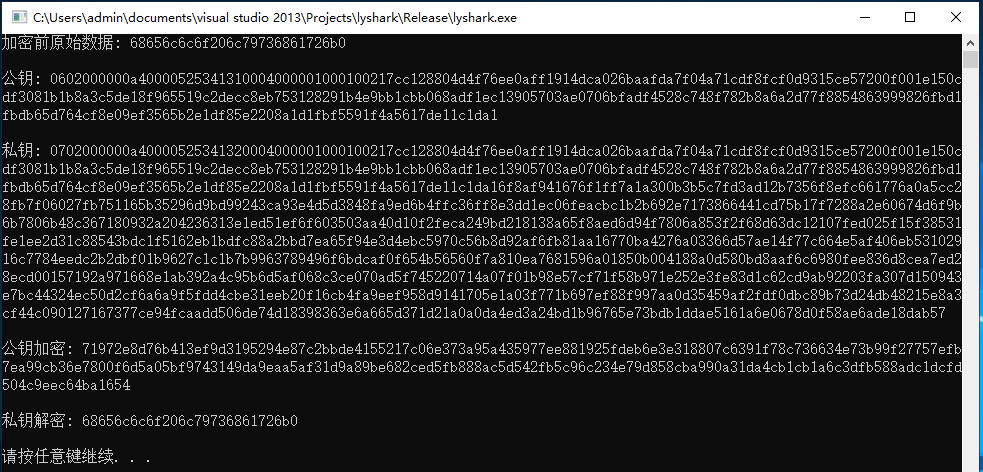
C/C++ 常用加密与解密算法
计算机安全和数据隐私是现代应用程序设计中至关重要的方面。为了确保数据的机密性和完整性,常常需要使用加密和解密算法。C是一种广泛使用的编程语言,提供了许多加密和解密算法的实现。本文将介绍一些在C中常用的加密与解密算法,这其中包括Xo…...

从Qt源码的角度分析Qt对象树与内存管理模式
作者:令狐掌门 技术交流QQ群:675120140 csdn博客:https://mingshiqiang.blog.csdn.net/ 文章目录 一、Qt对象树(Object Tree)和父子关系二、源码角度:QObject的内存管理构造函数析构函数addChild() 和 removeChild()三、C++模拟实现Qt的对象树内存管理模式Qt框架提供了一…...

MySQL与Redis如何保证数据的一致性
文章目录 MySQL与Redis如何保证数据的一致性?不好的方案1. 先写 MySQL,再写 Redis2. 先写 Redis,再写 MySQL3. 先删除 Redis,再写 MySQL 好的方案4. 先删除 Redis,再写 MySQL,再删除 Redis5. 先写 MySQL&am…...

micropython - espnow
espnow这个东西可以很简单的进行多设备近距离互联,连握手都不用注册一下就能发信息 目前8266那个8角的刷20231105的1M的固件可以运行 8266目前没有信号强度功能所以我自己写的类强度返回为0 我写的类实例化后最后注册谁发消息就是给谁而接收端则是什么都接ÿ…...
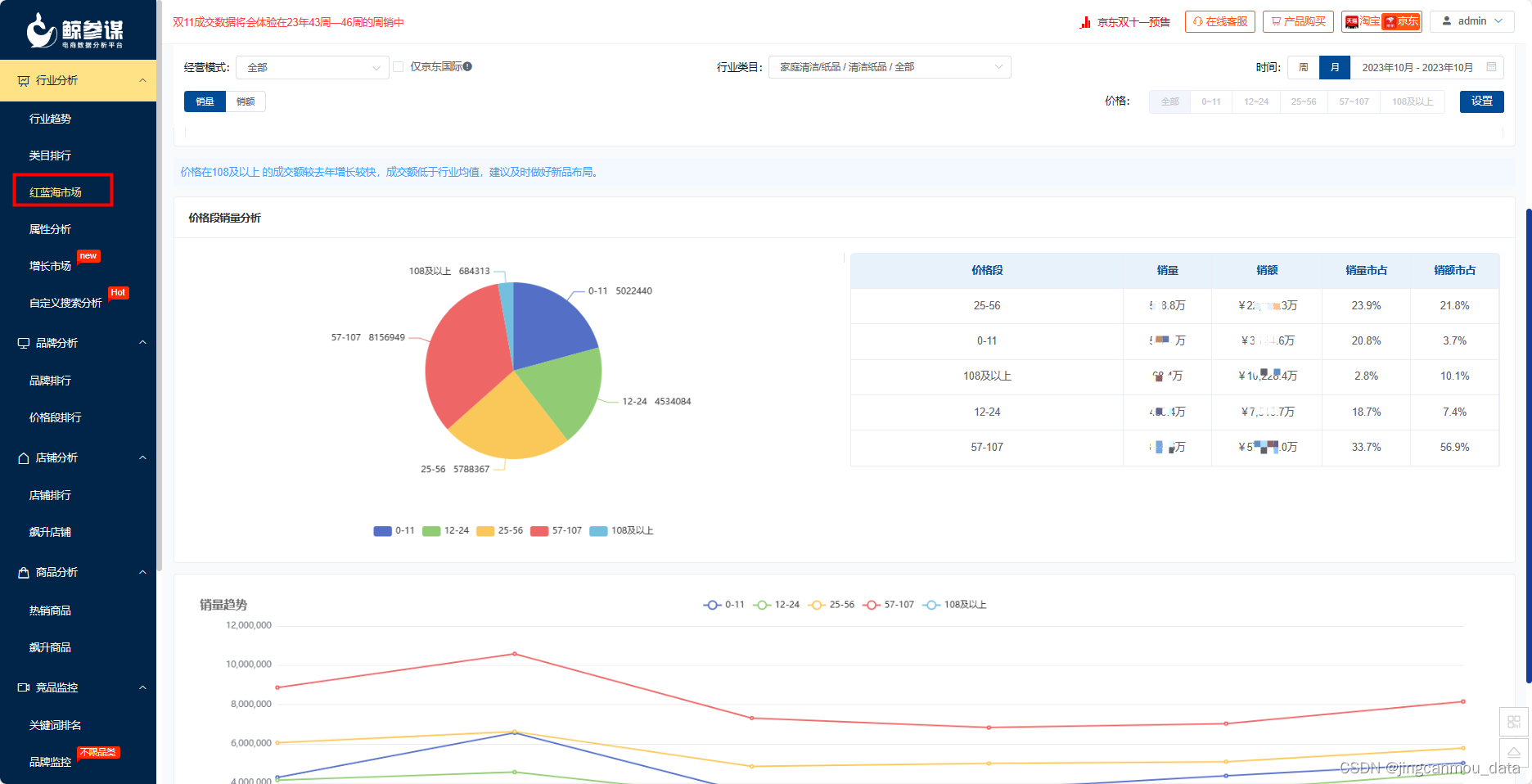
京东数据采集(京东数据运营):怎样快速获取京东市场大数据?
相信京东平台的很多品牌方们都有做数据分析的需求,但面对多而杂的市场数据,很多运营者都没有思路。单依靠肉眼来看,很多商品的类目、销售成绩、价格分布等运营者也未必清楚。 其实对于京东平台上市场数据的获取,品牌可以直接借助一…...

重生奇迹mu迷宫攻略
重生奇迹mu迷宫是一种比较有挑战性的游戏玩法,需要一定的技巧和策略才能完成。以下是一些基本的攻略和技巧: 了解每个迷宫的特点:不同的迷宫有不同的规则和特点,需要根据迷宫的特点来制定合理的策略。在进入迷宫前可以先了解一下…...

[网络] 4. HTTP/1.1 相比 HTTP/1.0 提高了什么性能?
HTTP/1.1 相比 HTTP/1.0 性能上的改进 ● 使用长连接的方式改善了 HTTP/1.0 短连接造成的性能开销。 ● 支持管道(pipeline)网络传输,只要第一个请求发出去了,不必等其回来,就可以发第二个请求出去,可以减…...

3.1.2 Linux时间子系统 hrtimer示例使用
文章目录 结构体定义接口初始化启动修改取消示例示例1示例2示例3结构体定义 struct hrtimer {struct timerqueue_node node;ktime_t _softexpires;enum hrtimer_restart...
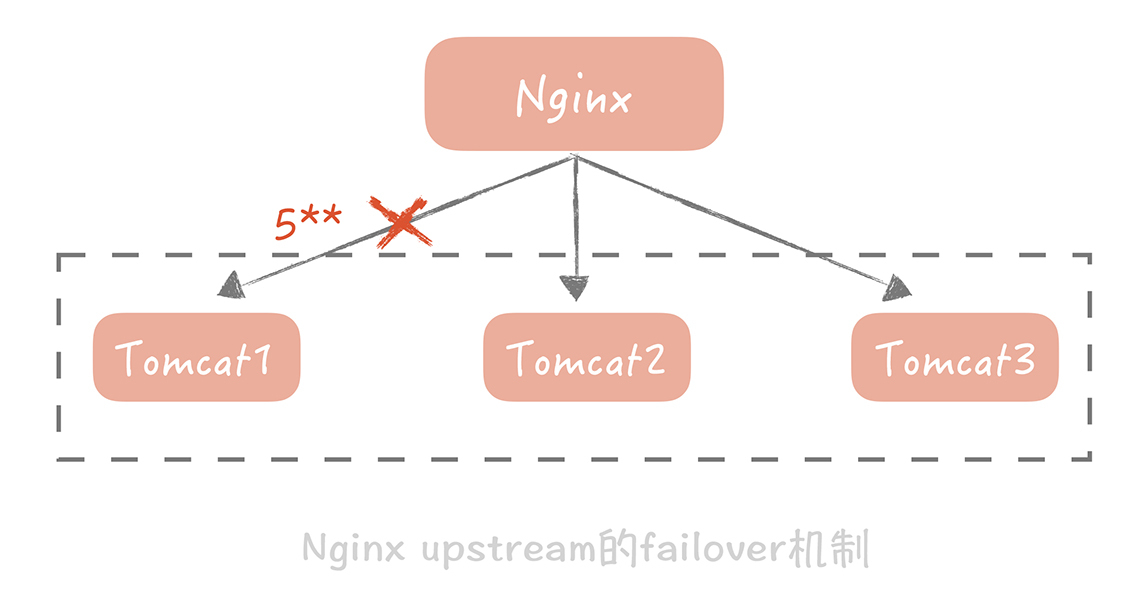
04 _ 系统设计目标(二):系统怎样做到高可用?
这里将探讨高并发系统设计的第二个目标——高可用性。 高可用性(High Availability,HA)是你在系统设计时经常会听到的一个名词,它指的是系统具备较高的无故障运行的能力。 我们在很多开源组件的文档中看到的HA方案就是提升组件可…...
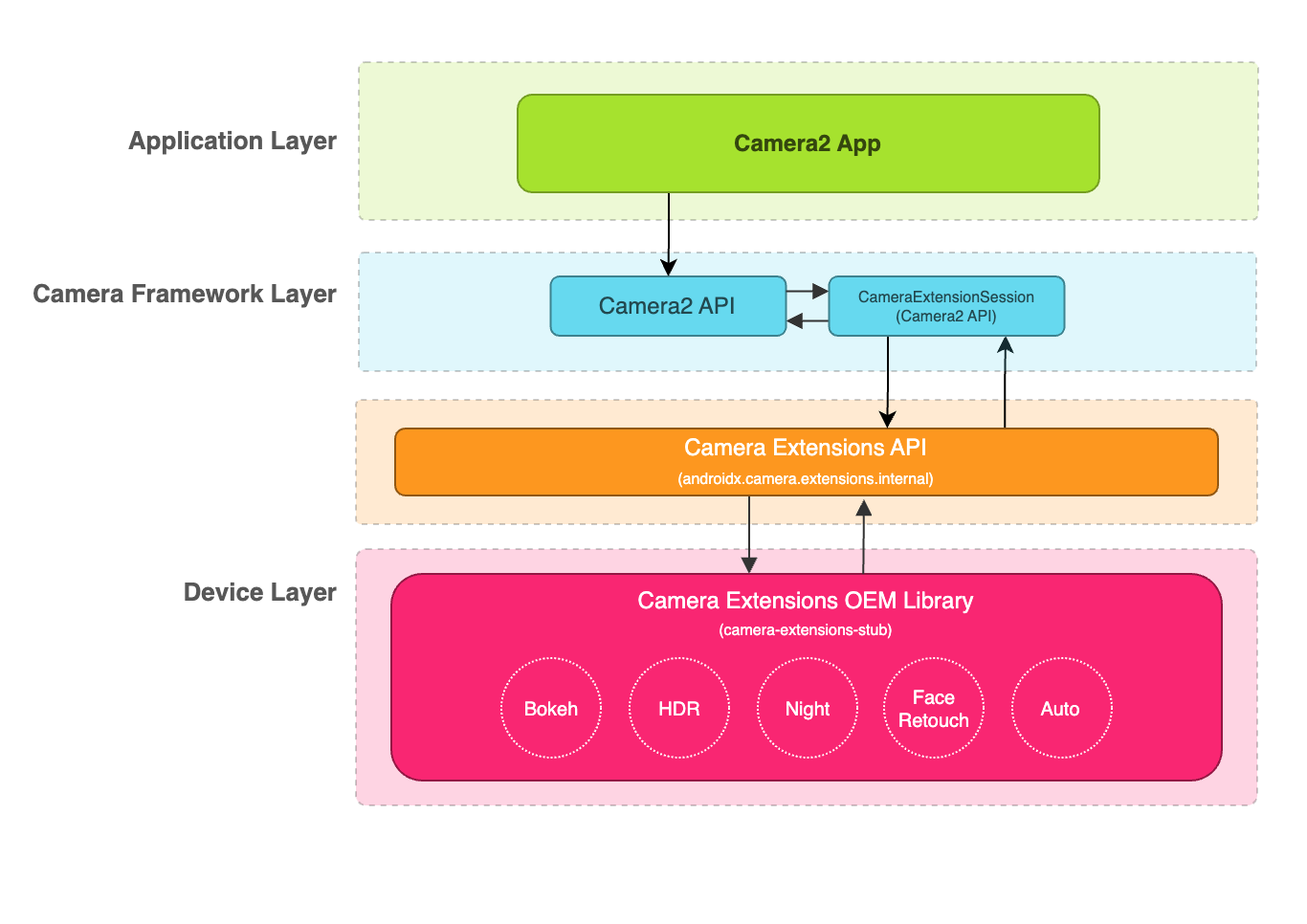
Android相机性能提高50%
文章目录 应用举例(可以不看这一part,直接跳过看具体怎么做):Snapchat 通过 Camera2 Extensions API 将新相机功能的集成速度提高了 50%**Camera2 扩展 API 可以访问高级功能更多设备上的更多机会 正文:开始使用扩展架…...
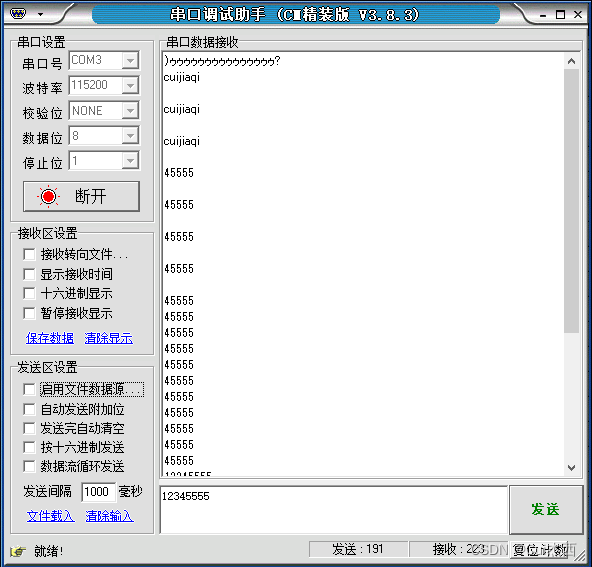
STM32F103C8T6第5天:独立看门狗、窗口看门狗、dma实验
1. 独立看门狗IWDG介绍(341.45) 什么是看门狗? 在由单片机构成的微型计算机系统中,由于单片机的工作常常会受到来自外界电磁场的干扰,造成程序的跑飞,而陷入死循环,程序的正常运行被打断&#…...
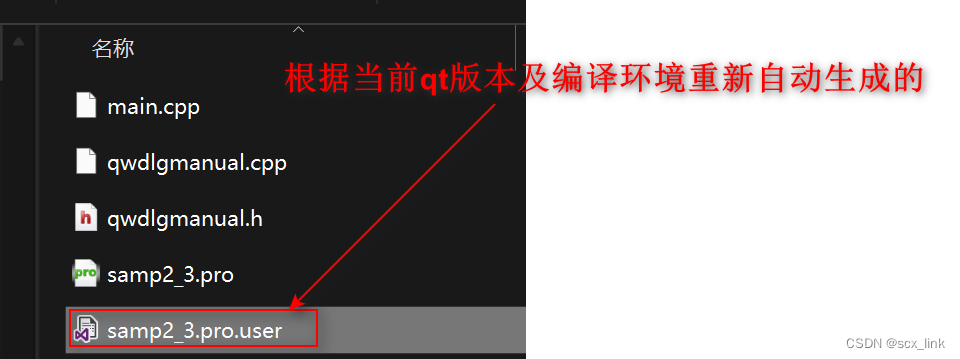
QT已有项目导入工程时注意事项
文章目录 从qt其他版本上开发的工程导入另一qt版本时 从qt其他版本上开发的工程导入另一qt版本时 这里以之前在qt5.12.2上开发的项目为例,现在到在qt6.5.3上运行。 不能直接导入IDE上,否则会报各种莫名奇妙的错误。 首先要把扩展名位.pro.user文件 删掉…...

Django视图层
一、请求与响应 视图函数 视图函数,简称视图,属于Django的视图层,默认定义在views.py文件中,是用来处理web请求信息以及返回响应信息的函数,所以研究视图函数只需熟练掌握两个对象即可:请求对象(HttpRequ…...

在软件开发中正确使用MySQL日期时间类型的深度解析
在日常软件开发场景中,时间信息的存储是底层且核心的需求。从金融交易的精确记账时间、用户操作的行为日志,到供应链系统的物流节点时间戳,时间数据的准确性直接决定业务逻辑的可靠性。MySQL作为主流关系型数据库,其日期时间类型的…...

地震勘探——干扰波识别、井中地震时距曲线特点
目录 干扰波识别反射波地震勘探的干扰波 井中地震时距曲线特点 干扰波识别 有效波:可以用来解决所提出的地质任务的波;干扰波:所有妨碍辨认、追踪有效波的其他波。 地震勘探中,有效波和干扰波是相对的。例如,在反射波…...
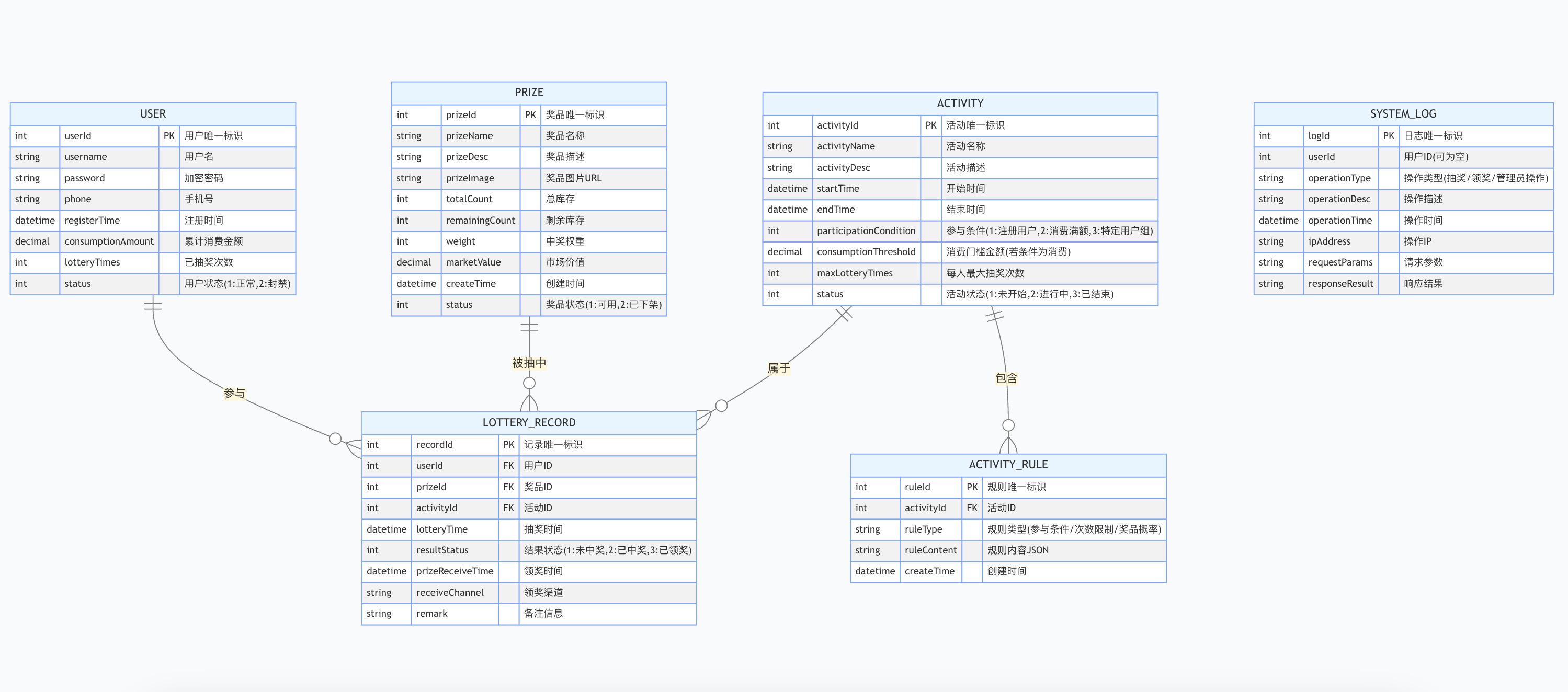
简易版抽奖活动的设计技术方案
1.前言 本技术方案旨在设计一套完整且可靠的抽奖活动逻辑,确保抽奖活动能够公平、公正、公开地进行,同时满足高并发访问、数据安全存储与高效处理等需求,为用户提供流畅的抽奖体验,助力业务顺利开展。本方案将涵盖抽奖活动的整体架构设计、核心流程逻辑、关键功能实现以及…...
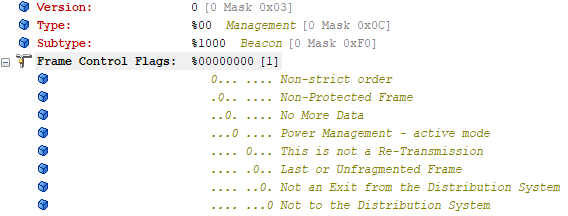
【WiFi帧结构】
文章目录 帧结构MAC头部管理帧 帧结构 Wi-Fi的帧分为三部分组成:MAC头部frame bodyFCS,其中MAC是固定格式的,frame body是可变长度。 MAC头部有frame control,duration,address1,address2,addre…...

uni-app学习笔记二十二---使用vite.config.js全局导入常用依赖
在前面的练习中,每个页面需要使用ref,onShow等生命周期钩子函数时都需要像下面这样导入 import {onMounted, ref} from "vue" 如果不想每个页面都导入,需要使用node.js命令npm安装unplugin-auto-import npm install unplugin-au…...

【ROS】Nav2源码之nav2_behavior_tree-行为树节点列表
1、行为树节点分类 在 Nav2(Navigation2)的行为树框架中,行为树节点插件按照功能分为 Action(动作节点)、Condition(条件节点)、Control(控制节点) 和 Decorator(装饰节点) 四类。 1.1 动作节点 Action 执行具体的机器人操作或任务,直接与硬件、传感器或外部系统…...

【Go】3、Go语言进阶与依赖管理
前言 本系列文章参考自稀土掘金上的 【字节内部课】公开课,做自我学习总结整理。 Go语言并发编程 Go语言原生支持并发编程,它的核心机制是 Goroutine 协程、Channel 通道,并基于CSP(Communicating Sequential Processes࿰…...

ElasticSearch搜索引擎之倒排索引及其底层算法
文章目录 一、搜索引擎1、什么是搜索引擎?2、搜索引擎的分类3、常用的搜索引擎4、搜索引擎的特点二、倒排索引1、简介2、为什么倒排索引不用B+树1.创建时间长,文件大。2.其次,树深,IO次数可怕。3.索引可能会失效。4.精准度差。三. 倒排索引四、算法1、Term Index的算法2、 …...
中关于正整数输入的校验规则)
Element Plus 表单(el-form)中关于正整数输入的校验规则
目录 1 单个正整数输入1.1 模板1.2 校验规则 2 两个正整数输入(联动)2.1 模板2.2 校验规则2.3 CSS 1 单个正整数输入 1.1 模板 <el-formref"formRef":model"formData":rules"formRules"label-width"150px"…...
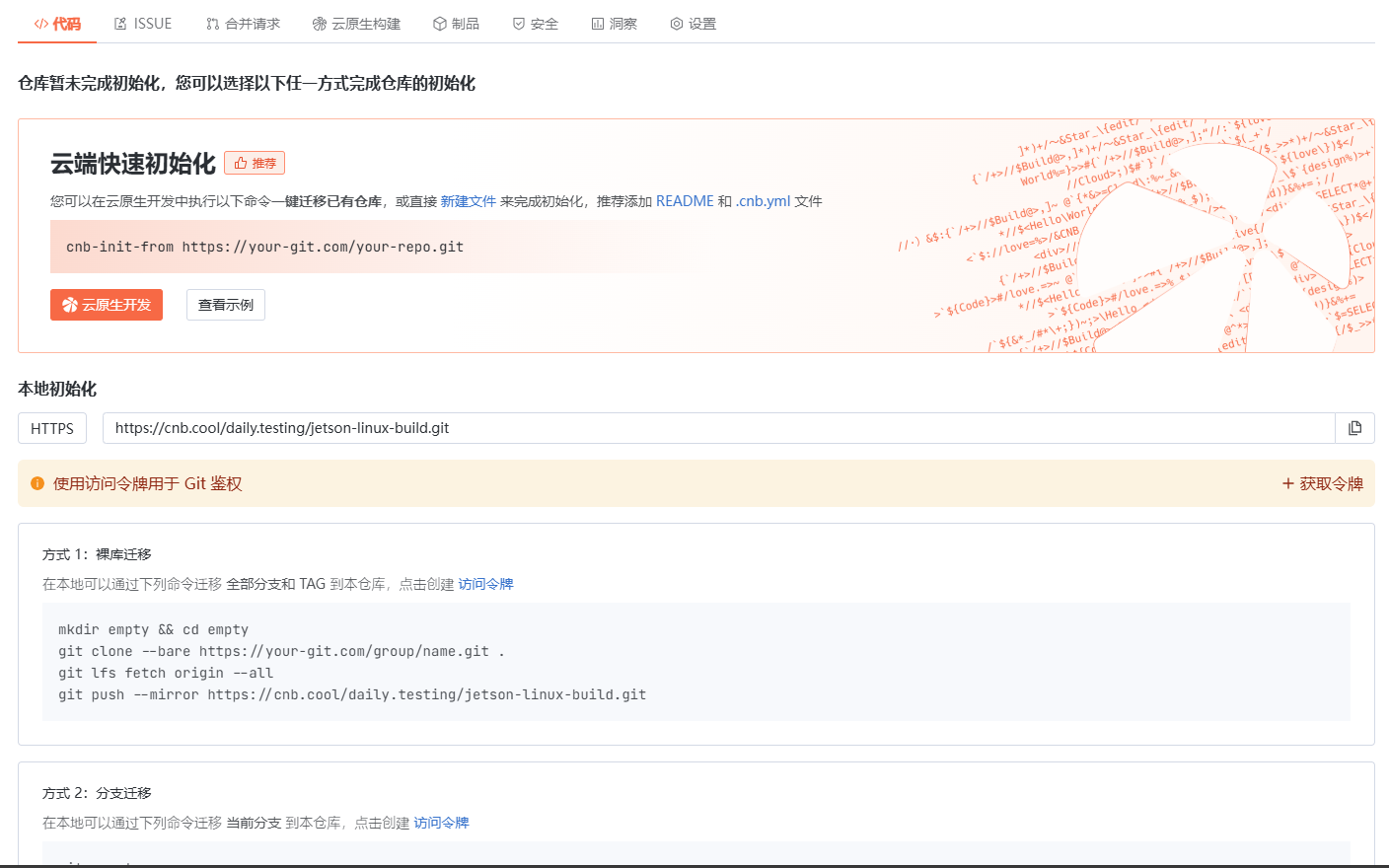
云原生玩法三问:构建自定义开发环境
云原生玩法三问:构建自定义开发环境 引言 临时运维一个古董项目,无文档,无环境,无交接人,俗称三无。 运行设备的环境老,本地环境版本高,ssh不过去。正好最近对 腾讯出品的云原生 cnb 感兴趣&…...
